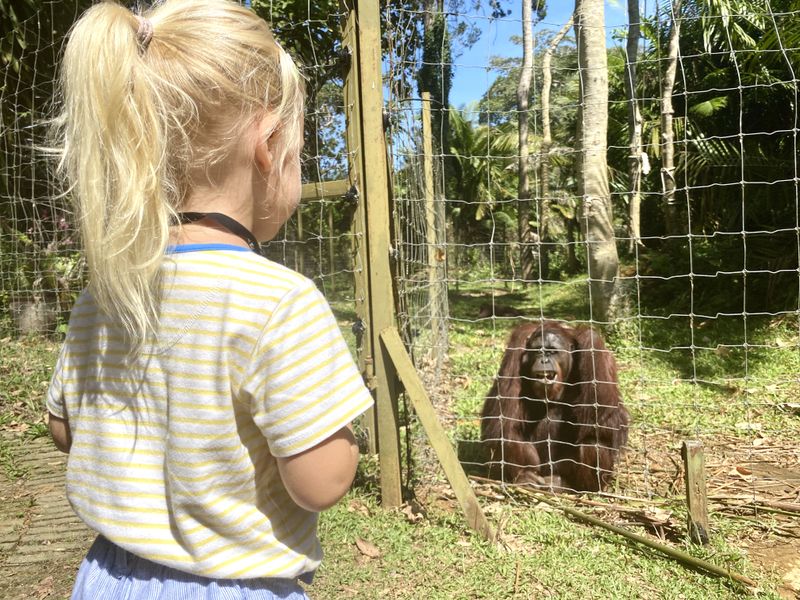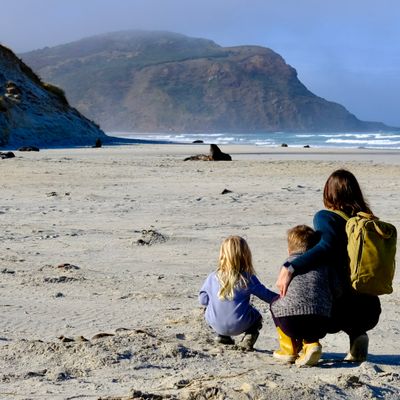Orang-utans at Bukit Merah Island
We avoid zoos, but always support rehabilitation centres for endangered species.
The difference? A zoo (buys and) keeps animals in a cage for the rest of their life; sometimes they donate to foundations, but the aim of the zoo is always to make money, it’s a (private) business.
A rehab centre rehabilitates orphan, confiscated or wounded animals with the aim of releasing them back into the wilderness and give the endangered species a chance to repopulate.
Although animals are still in fenced areas, these centres can make the difference between a species going extinct or not. Today we visited Bukit Merah Orang Utan Island, an hour from Penang on Malaysia mainland, to observe orangoutangs and learn the rehabilitating process.
Bukit Merah Orang Utan Island

It takes about an hour from Penang to come here, and we took a grab. We figured we’d call a taxi to get back, but our driver offered to wait for us and take us back (always worth asking!).
Bukit Merah Orang Utan Island Foundation is… on an island. Here, they rehabilitate Oranguntans to then take them back to Borneo, to live in the wilderness.
At the time of our visit, there are about 16 orangutans: the youngest is 2 year old Manu and the oldest, the king, is 35 year old BJ. 8 orangutans were recently transferred back into Borneo.
They have only one baby (or twins) and the intervals between babies can be as long as 10 years (which means their population takes a long time to recover from a decline).
When the orangutans are ready (8-10yo) they’ll take them to the island that you we see in the distance from the centre. Here they’ll live for about two years with no human contact: they have to prove they can survive on their own before heading to Borneo.
In the centre they rely mostly on humans for their survival. They learnt to stretch their their arms up towards the sky when they want food, so the passage to the human-free island is very important for their survival in the wilderness.

The centre is relatively small, and I was expecting the orang-utans to have more space: in fact, I was expecting them to have the whole island as visitors go through a "caged tunnel" to see them (the whole point is that we are in a cage, not them!). We were disappointed to see that they're anyway in cages — big ones, but still fenced in — which we didn't like.
Even so, this is not a zoo: the orang-utans are free to interact IF they want, and the cages are big enough for them to hide if they want peace. You'll see orang-utans for sure, but probably not all of them and maybe not close: for example, we only saw the hair of the king, because he didn't want to come down from the tree.
Even though we were a bit disappointed, the visit felt right and we do believe they do important work here: there are about 50,000-65,000 orangutans left in the wild (world wide!), and 2,000 to 3,000 are killed every year because of hunting, pet trade, loss of habitat through deforestation and palm oil plantations.
Centres like these need our support.







